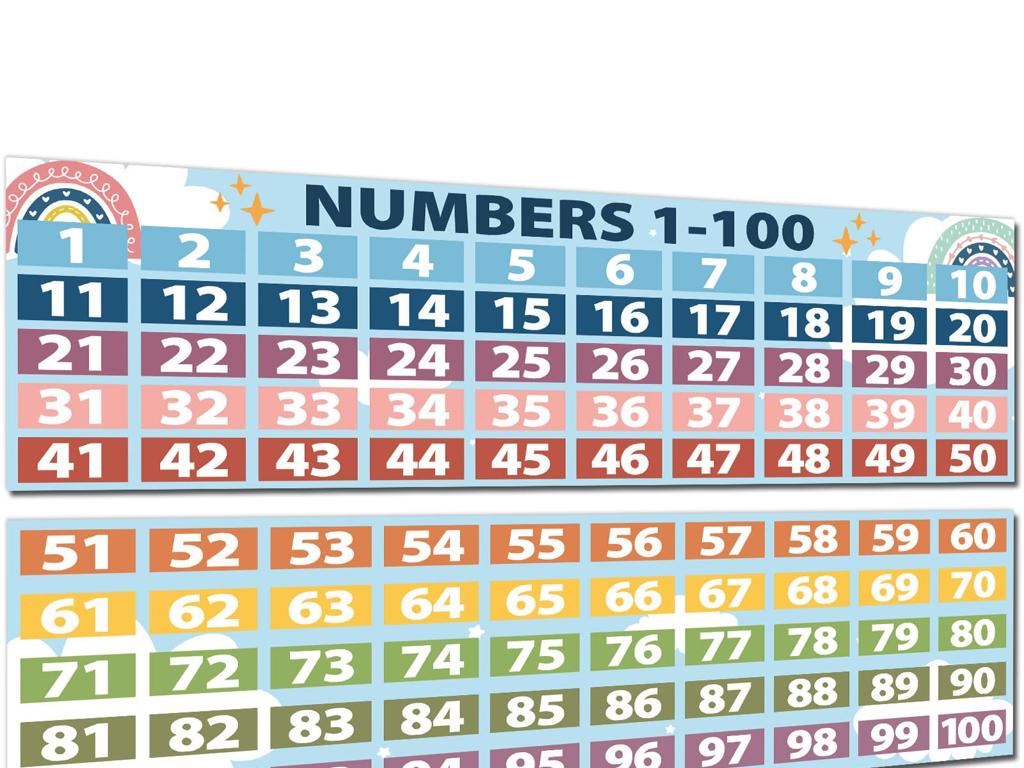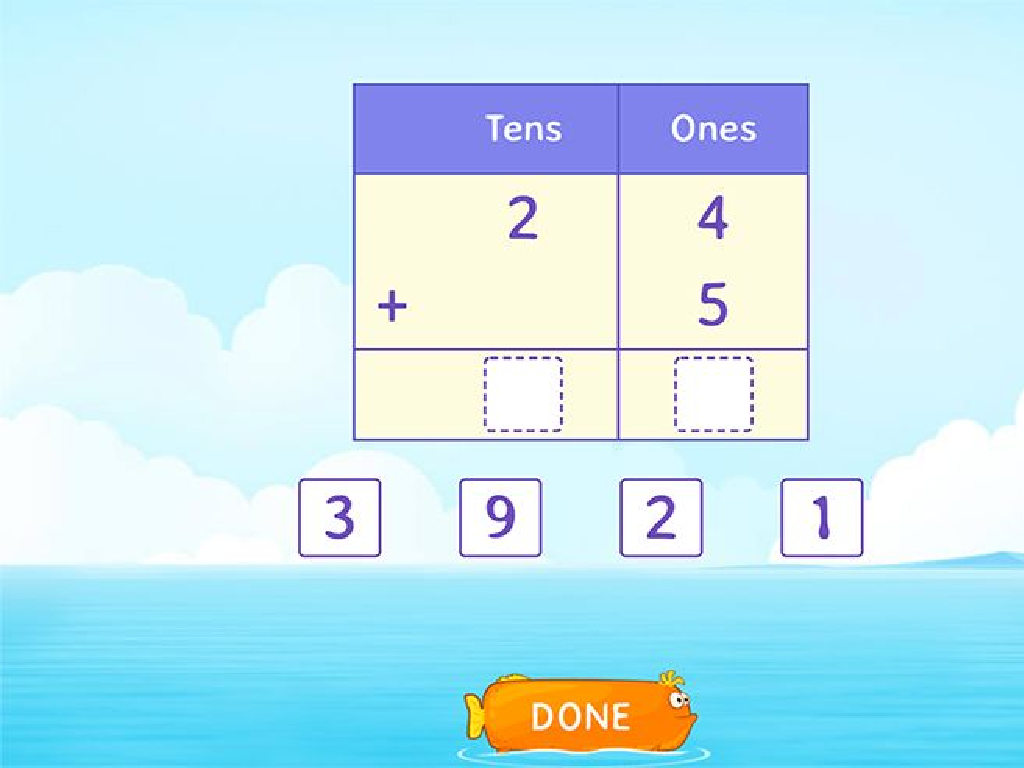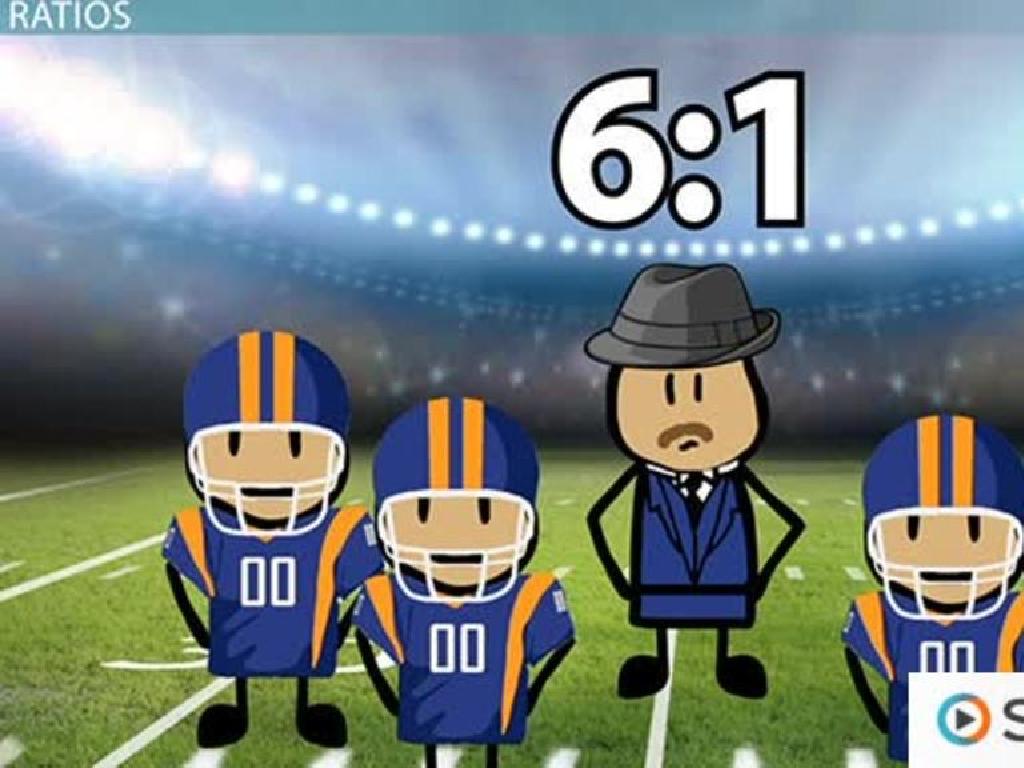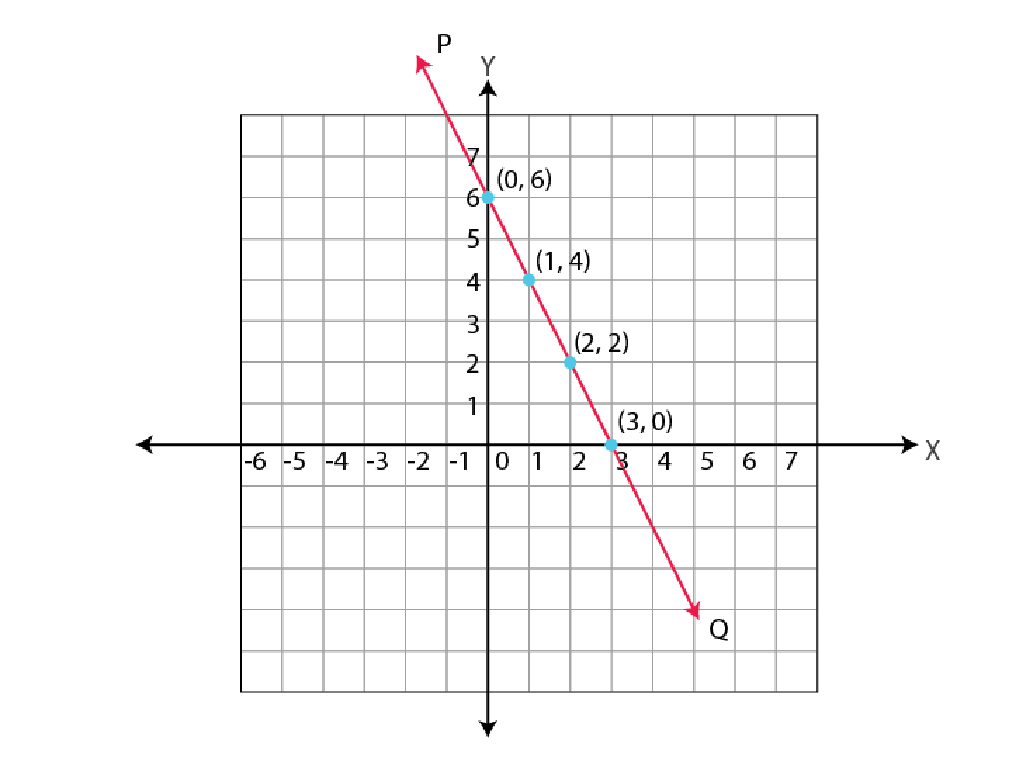Choose Customary Units Of Distance
Subject: Science
Grade: Third grade
Topic: Units And Measurement
Please LOG IN to download the presentation. Access is available to registered users only.
View More Content
Choosing Customary Units of Distance
– What are customary units?
– Customary units include inches, feet, yards, and miles.
– Measuring distances
– Use a ruler or tape measure to find how long or wide something is.
– Comparing different lengths
– Use objects like a pencil (inches) or a football field (yards) for comparison.
– When to use which unit?
– Inches for small objects, feet for furniture, yards for room sizes, miles for travel distances.
|
This slide introduces the concept of customary units of distance, which are part of the United States customary system. Students will learn about inches, feet, yards, and miles, and how to choose the appropriate unit for measuring different lengths. Emphasize the practical use of these measurements in everyday life, such as using inches to measure a pencil’s length, feet to measure furniture, yards for dimensions of a room, and miles for the distance between two places. Encourage students to bring a ruler or tape measure to class to practice measuring items around the classroom and to discuss when to use each unit of measurement.
Understanding Customary Units of Distance
– What are customary units?
– Units of measure used in the U.S.
– Examples: inches, feet, yards, miles
– Smaller to larger: 12 inches in a foot, 3 feet in a yard, 5,280 feet in a mile
– Measuring length and distance
– Use a ruler for inches, yardstick for yards, and odometer for miles
– When to use each unit
– Inches for small objects, miles for long distances
|
This slide introduces students to the concept of customary units of distance, which are the standard units of measurement used in the United States. Provide examples of each unit and their common uses: inches for measuring small objects like a pencil, feet for the length of a bed, yards for the length of a football field, and miles for distances between cities. Explain that there are specific tools for measuring with each unit, such as rulers, yardsticks, and odometers. Encourage students to think about which unit they would use for different objects or distances they encounter in daily life.
Measuring Distances: Inches, Feet, and Yards
– Common units for short distances
– Use inches (“), feet (ft), and yards (yd) for measuring
– Relationship: inches, feet, yards
– 12 inches make 1 foot, 3 feet make 1 yard
– Tools: rulers and yardsticks
– Rulers measure inches and feet, yardsticks for yards
– Practice measuring real objects
|
This slide introduces students to the customary units of distance commonly used in the United States. It’s important to explain that inches, feet, and yards are units used to measure different lengths and distances that are not too long. Show them a ruler and a yardstick, and explain the number of inches in a foot and the number of feet in a yard. Have various objects ready for the students to practice measuring, such as books, desks, and pieces of string. This hands-on activity will help solidify their understanding of when to use each unit and how to convert between them.
Understanding Distance: When to Use Miles
– Miles for long distances
– Like the length of a trip from home to school.
– One mile equals 5,280 feet
– Or 1,760 yards, which is a lot of basketball courts!
– Miles on road signs
– You’ve seen them driving with your family!
– Measuring between places
– How far is it from your house to the park?
|
This slide is aimed at helping third-grade students understand when to use miles as a unit of measurement for distance. Begin by explaining that miles are used for measuring longer distances, such as the length of a trip from one city to another. Clarify that one mile is a standard measurement equal to 5,280 feet or 1,760 yards, and help them visualize this by comparing it to the length of multiple basketball courts. Show examples of road signs that indicate miles to give them a practical context. Finally, encourage them to think about distances between familiar places, like their house to the park, and discuss whether measuring in miles would make sense for those distances.
Choosing the Right Unit of Distance
– Think about the object’s size
– Use inches for small things
– Like measuring the length of a pencil
– Feet or yards for bigger areas
– A room’s length or a football field’s width
– Miles for very long distances
– The distance from one city to another
|
When teaching students how to choose the appropriate customary unit of distance, start by helping them visualize the size of the object they are measuring. For small objects that can be held in the hand, such as a pencil or a book, inches are the most suitable unit. For larger spaces that they can walk across, like a classroom or a backyard, feet or yards are more appropriate. Finally, for distances that are too long to walk, like the stretch of road between cities, miles are the best unit to use. Encourage students to think about familiar objects and distances to help them decide which unit is most appropriate. Provide examples and practice exercises where they can apply this knowledge.
Let’s Practice Measuring!
– Measure classroom items
– Choose the right unit
– Inches, feet, or yards? Think about the size of the item.
– Pair up for measuring
– Record your measurements
– Write down the length next to each item.
|
This slide introduces a hands-on activity where students will apply their knowledge of customary units of distance by measuring objects found in their classroom. Before beginning, review the units of inches, feet, and yards, and discuss which units are most appropriate for different types of measurements. For example, use inches for small objects like a pencil, feet for something larger like a desk, and yards for even larger distances like the length of the classroom. Students should work in pairs to foster collaboration and ensure they agree on the measurements. Provide rulers and tape measures for the activity. After measuring, each pair should record their findings clearly. This activity will help solidify their understanding of choosing appropriate units and measuring accurately.
Class Activity: Measurement Scavenger Hunt
– Find items to measure
– Choose the right unit
– inches, feet, yards, or miles?
– Record your measurements
– Use a ruler or tape measure
– Present findings to class
|
This activity is designed to help students understand and apply their knowledge of customary units of distance in a practical setting. Provide students with rulers, tape measures, and a list of items to find and measure within the classroom or schoolyard. Encourage them to think critically about which unit of measurement is most appropriate for each item (e.g., inches for a pencil, feet for a desk, yards for the length of the playground, miles for the distance to a nearby park). After measuring, students should write down their measurements and be prepared to explain their choice of unit when presenting to the class. Possible variations of the activity could include measuring the same item with different units, comparing measurements with classmates, or estimating measurements before actually measuring.
Conclusion: Choosing the Right Unit of Distance
– Reviewing unit selection
– How to decide between inches, feet, yards, or miles.
– Importance of accurate measurement
– Accurate measures are crucial in everyday tasks.
– Addressing lesson questions
– Summarizing key points
– Let’s recap what we’ve learned about distance units.
|
As we wrap up today’s lesson, it’s important to revisit the main concepts we’ve covered. Start by reviewing how to choose the appropriate customary unit of distance for different scenarios, emphasizing the practical examples we’ve discussed. Highlight the significance of measuring accurately, whether it’s for cooking, building, or comparing distances. Open the floor for any lingering questions to ensure clarity and understanding. Conclude by summarizing the key points of the lesson, reinforcing the idea that understanding and using the correct units of distance is a valuable skill in both academic and everyday contexts.





